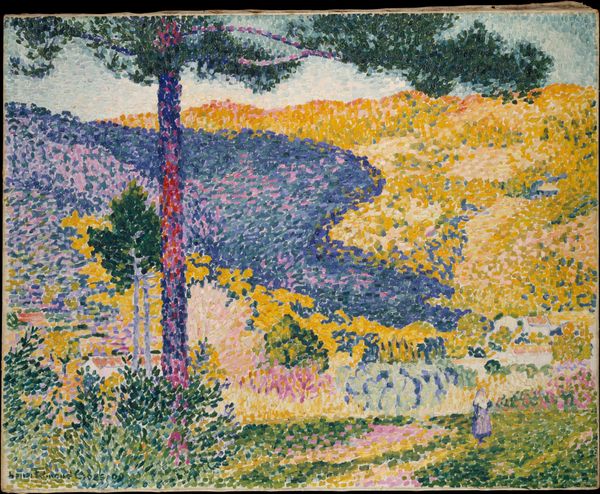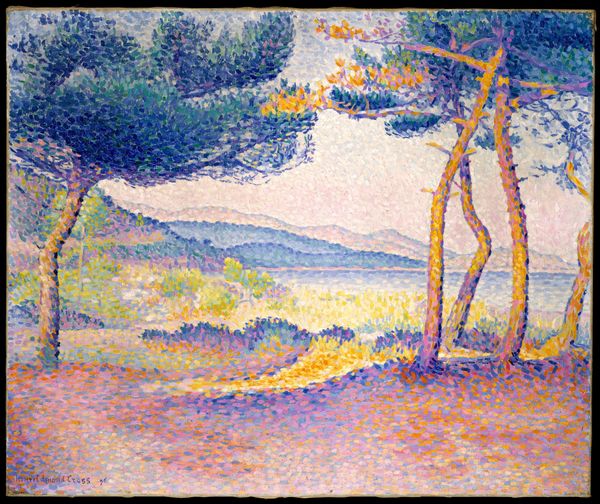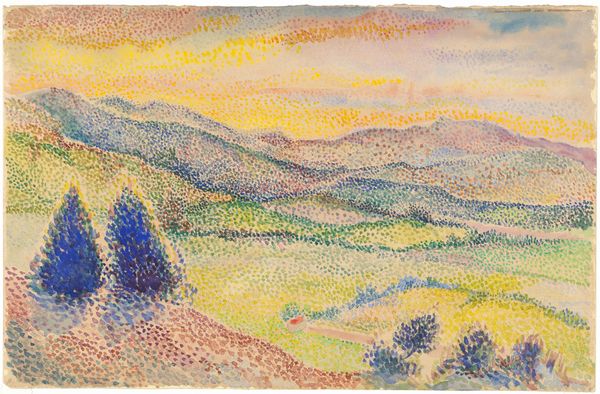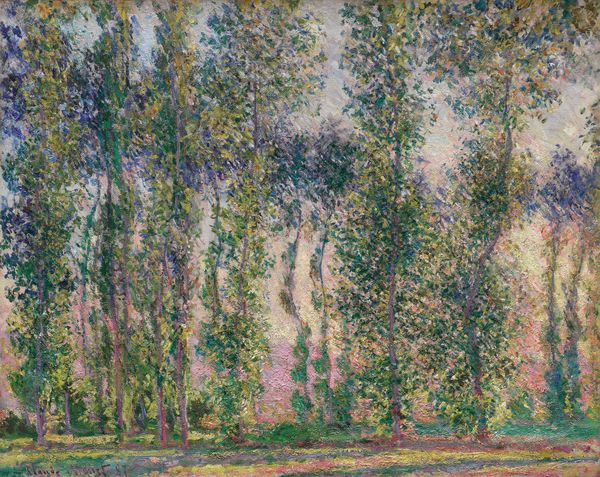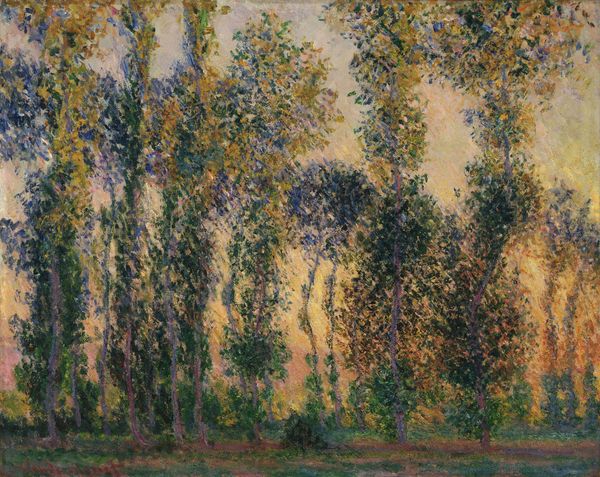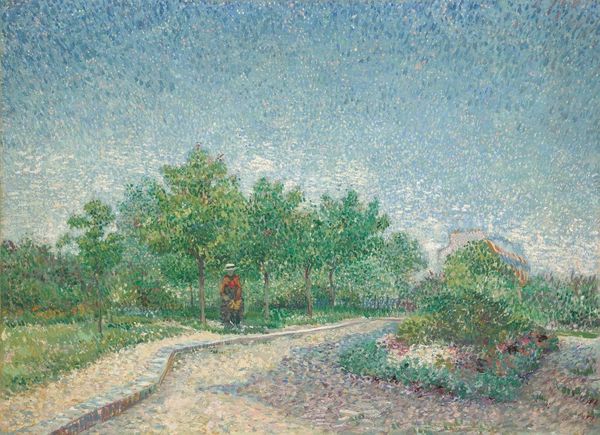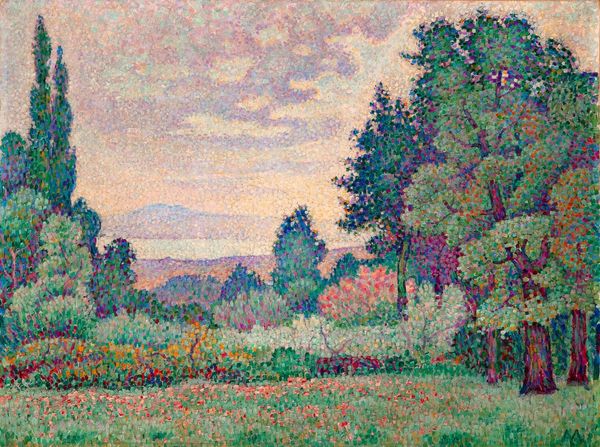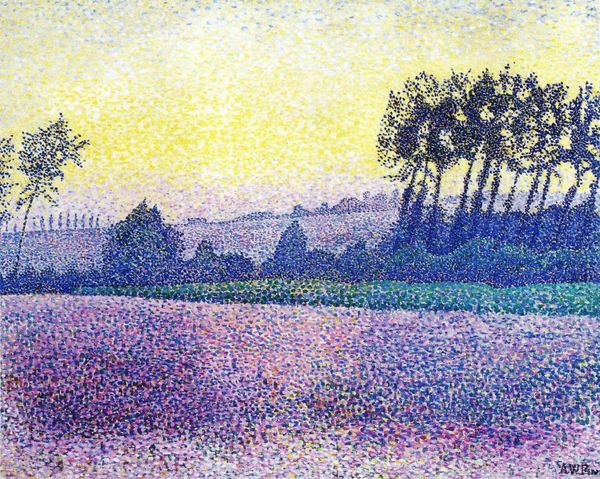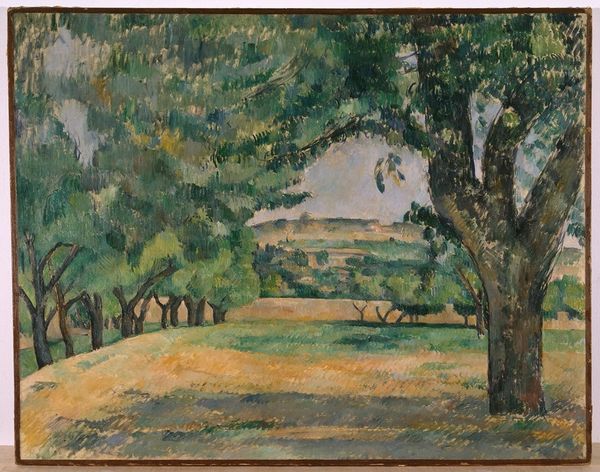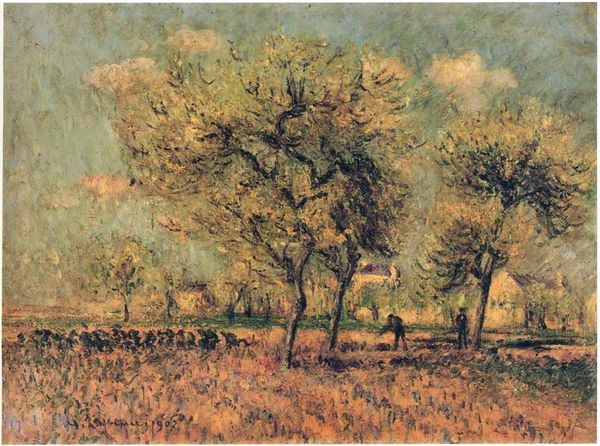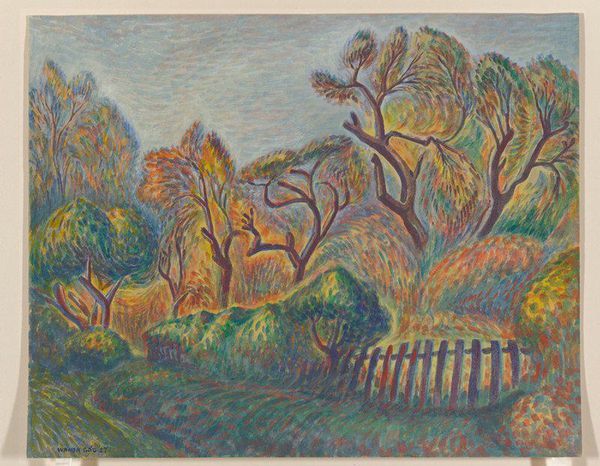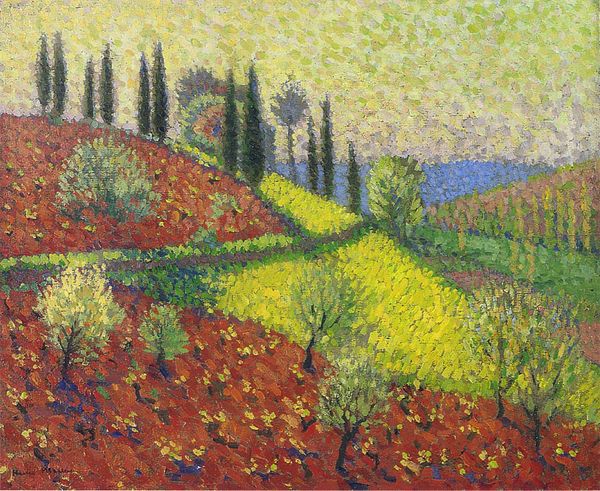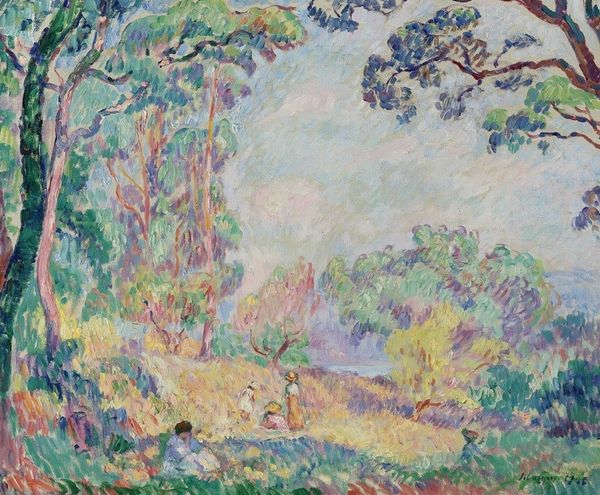
#
tropical
#
abstract expressionism
#
naturalistic pattern
#
abstract painting
#
impressionist landscape
#
handmade artwork painting
#
fluid art
#
acrylic on canvas
#
abstract nature shot
#
pattern in nature
Copyright: Public domain
Editor: Here we have Hippolyte Petitjean’s "Landscape in Mâcon," created in 1914. Looking at all these tiny dots of paint, I’m immediately struck by the sense of calm. What historical factors do you see at play within the canvas? Curator: Well, it’s hard to ignore the year it was painted, 1914. While the technique and subject matter might initially seem idyllic, one has to consider that this was painted on the cusp of World War One. Consider the societal pressures – the looming threat of war, a changing world order. Do you think this might have influenced Petitjean to depict such a tranquil escape? Editor: That’s interesting. I hadn’t considered the social context. The artwork does present this utopian landscape, almost deliberately ignoring any tension from the real world. It's a very personal vision rendered with an industrialized method, a production line of tiny dots. Curator: Precisely. And pointillism itself, emerging from impressionism and neo-impressionism, was a highly theoretical movement. How do you think Petitjean's specific adaptation and expression contributed to, or even challenged, the academic norms of his time? Editor: I guess he’s using a somewhat scientific method – a structured technique to create this really sensory, almost dreamlike vision. The small touches do make a unified landscape in the eye of the beholder. Maybe by focusing on something small, Petitjean offers some perspective to a world on the brink. Curator: It’s a fascinating paradox isn’t it? Focusing on this seemingly safe pastoral scene, during a time of enormous societal shifts. It seems both a commentary on and an escape from reality. It reflects the complexity of artistic responses to disruptive social climates. Editor: Absolutely. Thinking about this painting now in terms of pre-war anxiety, and also about Petitjean choosing Pointillism is interesting, it completely changes how I understood his process. Curator: Indeed. It shifts the perspective, revealing that the artistic expression does not exist in a vacuum but within socio-political framework.
Comments
No comments
Be the first to comment and join the conversation on the ultimate creative platform.
